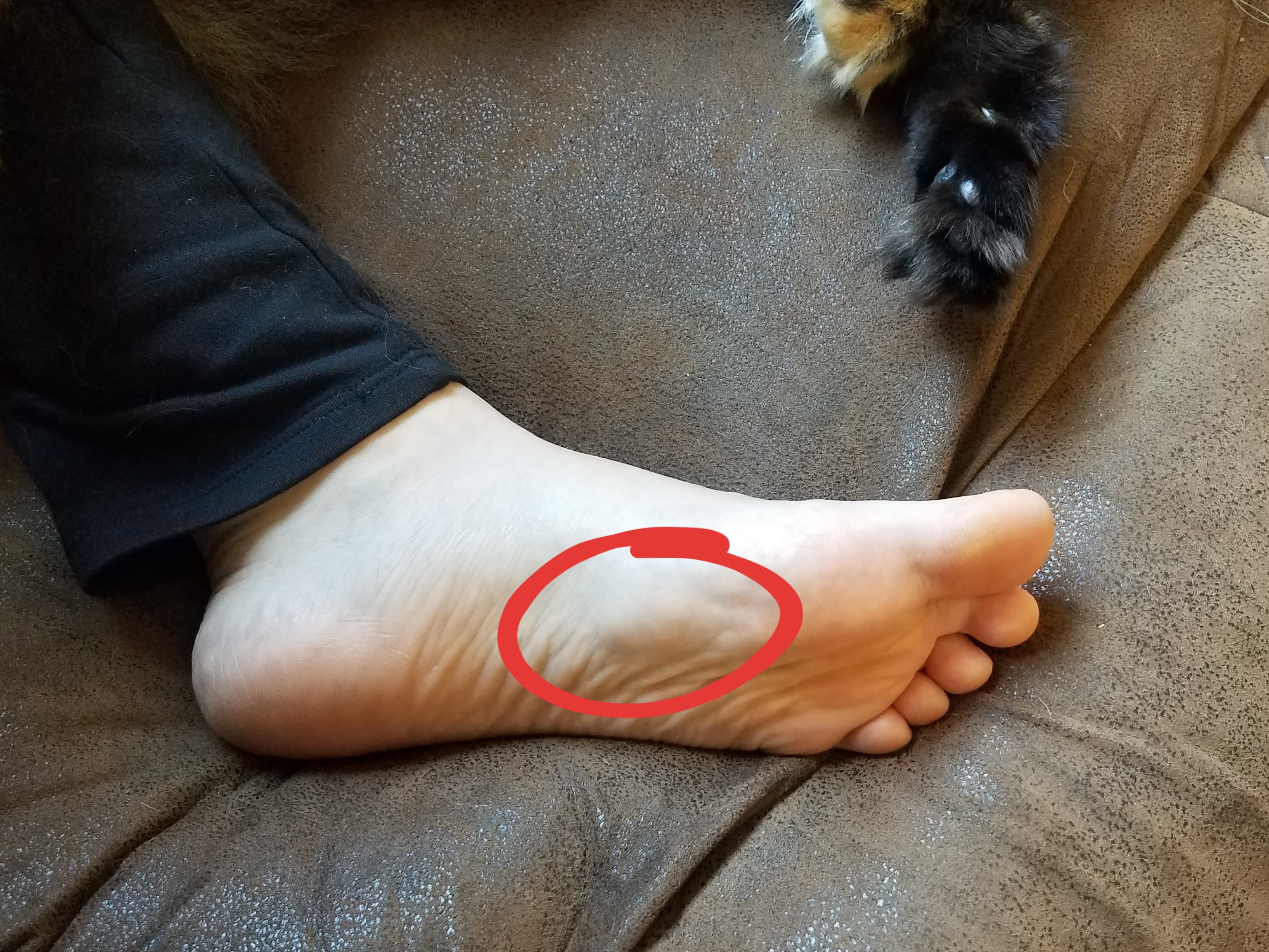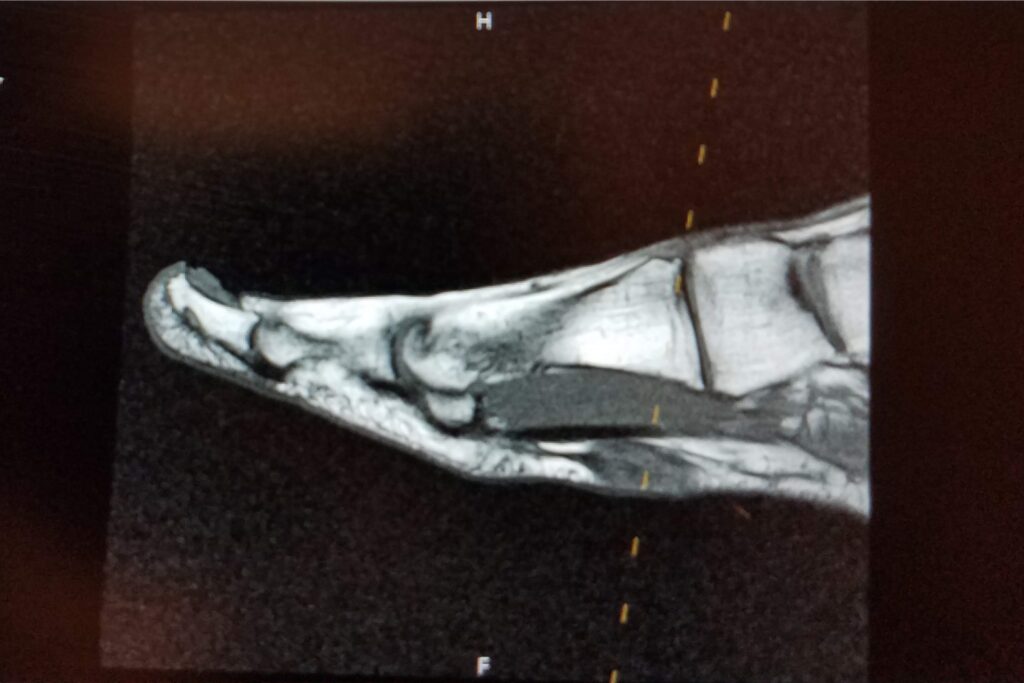Whether during Plastic-Free July or a Lenten challenge, this blog has helped to keep me honest and accountable, and I intend to keep that up with my New Year’s Resolution for 2021. Back in January, I wrote about making time for myself to complete 500 miles of running this year. The purpose was to support both physical and mental health, as well as a healthy work-life balance.
As of today’s post, coming into the halfway point of the year, I have completed 24.4 miles of running, roughly 10% of where I should be right now. This extreme shortfall in mileage comes down to a couple of factors, most certainly including the fact that I’ve prioritizing other things: time with my husband (totally justifiable), indoor and outdoor house upkeep (reasonably justifiable), and responsibilities for work (somewhat justifiable). But the primary factor is a long-term issue with my foot that has finally gotten bad enough to impact my running and make me admit that I am not invincible.
The Importance of Good Habits
Back in 2013 while I was training for my first half marathon, I noticed a hard, tiny (like the ball in a ball-point pen) bump in the arch of my foot. No one I asked seemed to know what it was, but it kept growing in size over the years. My massage therapist told me it was probably a calcium deposit and to keep massaging it to try to break it up. Eventually, I started to get pain while running if I didn’t stretch and massage the arch of my foot beforehand.
As I mentioned in my New Year’s Resolution post,[1] I did next to no running in 2020 after quarantine started. It turns out that staying home and wearing nothing but unsupportive house shoes for a year is not great for your feet, especially if one of them already has an unaddressed issue. When I decided to get back into running this year, I assumed it would be as easy as it has always been to start back up after a long winter break; it was not.

In all the times I went running this spring, I could not make it than four miles at once. Even with massage, stretching, and some Aleve beforehand, the pain I experienced over two miles was tolerable but noticeable. I even observed changes to my gait and foot placement while taking short walks with Christian, and that was concerning to me. I have apparently reached the age where I am no longer willing to push through an unknown pain, risking additional injury, for the sake of an arbitrary standard, even a self-imposed one.
After years of encouragement from family and friends, I finally made the time to go see an orthopedist this May. The little bump in my foot, now not so little (more like two peas in a pod) turned out to be a fibrous nodule embedded in my plantar fascia. The plantar fascia is the tissue that connects the toes and the heel. Runners know the term “plantar fasciitis,” a common inflammation of the tissue, that causes heel pain. Ironically, for as poor as my training habits have always been, I have never had plantar fasciitis. Instead, I have a plantar fibroma.
Plantar Fibroma
My doctor tells me that while the cause is unknown, it likely resulted from a micro-tear at some point, and through regular use and repetitive impact, it grew over time, whenever irritated. Wearing shoes without enough arch support has increased the strain on my plantar fascia, probably contributing to its growth, which in turn stretched my plantar fascia even more as pressure from my shoes pushed on the fibroma.

He strongly recommended against surgery, as that can frequently do more harm than good. Sometimes they come back, and sometimes they multiply, a condition called plantar fibromatosis. And I cannot stress this point enough: do not do an image search for plantar fascial fibromatosis. I thought I had prepared myself for the inevitable surgery photos; I had not.
The doctor’s recommendation was basically to “try not to piss it off” (his words, not mine). He showed me some massages for my foot (around, not on the fibroma itself) and stretches for my calves – all to be done every morning, every night, and before and after running. When I asked him if I’d still be able to run marathons, he asked me (half-jokingly, I thought) why I would want to do that. He did ultimately say I could, if I worked my way back up to it after getting custom orthotic inserts for my shoes.
Custom Orthotics
I rarely go to the doctor, and when I do, it’s usually because my doctor’s office calls to remind me that I’m overdue for a checkup, or because someone in my family insists that I get something looked at. In the span of a few weeks, I made the initial appointment with the orthopedist, a separate appointment for an MRI, a follow-up appointment to review the results, a fitting for custom orthotics, and a follow-up for that – or, for me, years’ worth of appointments to address this deferred maintenance.

My plantar fascial massage involves pulling my toes back with one hand and moving my fingers from the ball of my foot to my heel, while avoiding the fibroma. Pressure should be firm, but not intense.
Learning about the custom orthotics was at least an interesting process, even though the fact that I had to get them made me feel old. The technician took 3D images of my feet and ordered the inserts based on what he saw. They are designed to support my high arches, and one has a significant cutout for my fibroma. While I waited for the inserts, I made some of my own at home by cutting out a section of my running insoles. My homemade ones didn’t eliminate the pain, but they made walking and gardening much easier.
Now that the real ones have arrived, I’m breaking them in, which must be done slowly. I was instructed to start with one hour a day, periodically increasing by an hour, based on my comfort level. Since the orthotic puts pressure on areas of your feet that aren’t used to it, you get sore quickly. Additionally, since the orthotic changes the position of your foot in your shoe, the muscles throughout your legs (and probably hips and back too) need time to adjust to being used differently.
Looking Ahead
Through all of this, I tried to keep a positive outlook and see humor in the situation. I was very relieved that my doctor didn’t want to operate, and I considered naming my fibroma, since we’ll probably be together for a while. I did my own research online and found that while no one really knows what causes them, there could be a genetic connection – my dad has them in his hands (Dupuytren disease).[2] A common type of plantar fibromatosis is called Ledderhose disease, which occurs most frequently in middle-aged men.[3] I laughed and pointed out to Christian that I drive a sports car, brew beer, and play the tuba: how much more of a middle-aged man could I possibly be?

I’m also trying to afford myself a little compassion and patience, and not to judge myself too harshly for being on track to fail so spectacularly at my goal. I want to make an effort in the second half of 2021 to at least honor the spirit of my original resolution, which was to promote health and balance – through the framework of a mileage goal – even if I don’t hit 500 miles.
As I break in my new orthotics, I imagine working back toward mileage that doesn’t embarrass me, but I don’t know what that will look like or how quickly that will happen. I have logged almost 50 miles for the year between running by myself and walking with Christian, so I think completing another 100 miles over the next six months should be achievable, if I count both activities. That would mean a revised goal of 150 miles of running and walking by December 31.
Ultimately, this process has been a good reminder that I am still human, and that ignoring proper care of my body has consequences. I have always been terrible about stretching before and after running, but I know that my current situation might not be as bad if I had taken better care of myself over the years. My homework of massage and stretches over the last two months has already relieved a lot of the pain, and now my orthotics are helping too. Going into the second half of 2021, I hope this process will serve as a reminder to make my wellbeing a priority.
Thanks for reading!
[1] https://radicalmoderate.online/hindsight-is-2020-part-2/
[2] https://www.footcaremd.org/conditions-treatments/heel/plantar-fibroma-and-plantar-fibromatosis
[3] https://www.physio-pedia.com/Ledderhose_disease
2 Comments
Will · June 28, 2021 at 11:41 am
I find “Gait Happens” on IG and website to be a thoughtful resource for healthy feet.
Good luck!
Alison · July 3, 2021 at 7:18 pm
Thanks, Will!